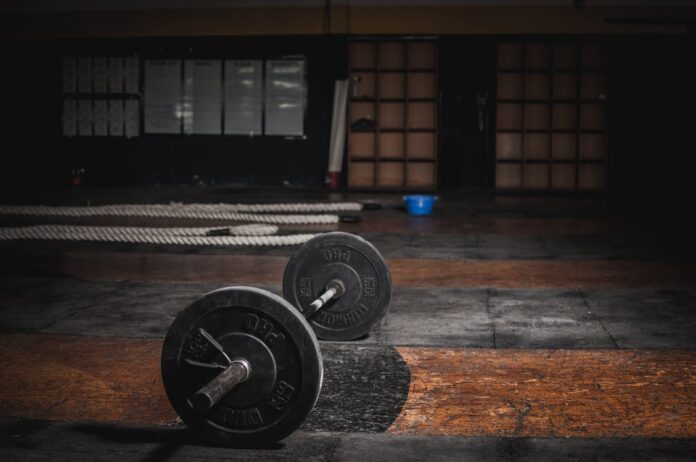
On 21 March 2020 all gyms and training studios across the UK were ordered to close, following the government’s decision to ‘lockdown’ to limit the spread of Covid-19. Since then, the fitness industry has undergone a near overnight transition, with a surge in the number of live and on-demand online workouts that can be performed at home with limited equipment. Multinationals, fitness start-ups, national gym chains and personal trainers are all helping to keep the nation active by providing workouts through apps, live streams and video uploads to social media.
The 10 million or so UK gym-goers have never had so much choice when it comes to a home workout. Much of this content is also freely available, be this for altruistic or business reasons. With success largely dependent on viewing figures, providers face the unenviable challenge of how to attract and maintain viewers in an increasingly crowded market.
Standing out with novel and engaging content can be a key differentiator. Such content is highly valuable, as viewers typically repeat enjoyable, challenging workouts and explore other content produced by the provider. This drives higher viewing figures together with the associated commercial success. To maximise these benefits, providers will want to protect their workouts from copying; the ability to do this depends on the extent to which workouts can be protected by copyright.
Copyright and online fitness workouts
Copyright protects ‘works,’ which are the forms in which ideas are expressed. In the UK, the Copyright Designs and Patents Act (the “CDPA”) sets out a closed list of categories of works in which copyright protection automatically arises. A closed list means copyright can only protect works that fall within the categories listed. From the list, it’s clear that copyright can protect video files and live streams of workouts as films and broadcasts respectively. Accompanying written descriptions can also be protected as literary works, provided they contain sufficient detail and are original (i.e. not copied).
But what about the workout itself? As set out above, an original routine can generate considerable commercial benefits for its creator. Such content arguably merits protection because it requires effort and expertise to produce, with regards to the selection of exercises, setting of intensity and positioning of rest breaks. Whether or not copyright can protect a workout routine is, however, a grey area, which is yet to be considered by a UK court.
Predicting which way a court may rule is difficult. At face value, workout routines don’t fall into any of the CDPA’s categories. Although they share similarities with dramatic works, which is defined in the CDPA to include dance and mimes, a workout routine isn’t easily associated with the word ‘dramatic.’ The Court of Appeal has held that the term ‘dramatic work’ must be given its natural and ordinary meaning. Arguably, workouts serve a functional value (improve fitness) and perhaps lack the artistic qualities needed for the word ‘dramatic’ to have its ordinary meaning. The U.S Copyright Office has taken this stance and denies protection for workout routines on the basis that they are compilations of uncopyrightable subject matter; exercises are deemed not to fall into any of the U.S’s protected categories (one of which is a dramatic work).
However, the European Court of Justice recently held in Cofemel that copyright protection arises in a work if its subject matter is original and identifiable with sufficient precision and objectivity. A work is original if it’s the author’s own intellectual creation and an expression of his free and creative choices. Works that satisfy these criteria are protected, irrespective of national laws that make protection contingent on additional factors, such as artistic merit. Although this ruling was made in respect of artistic works (which the clothing at issue in the case was claimed to be), its application is potentially far reaching. For starters, the validity of the CDPA’s closed list of categories is called into question. In theory, an online workout routine that combines a series of exercises in a new order is original and identifiable and therefore under Cofemel would constitute a work in which copyright protection ought to subsist.
How a UK court will interpret Cofemel, particularly in light of Brexit, remains to be seen, but there have already been signs in a UK case concerning artistic works that it will encourage our Courts to relax previously strict formal requirements for protection. It would certainly now appear at least arguable that the ‘dramatic work’ category of copyright works should be approached more broadly, including in relation to carefully planned exercise routines.
Practical points – protecting material and avoiding inadvertent copyright infringement
Being aware of copyright issues enables workout providers to better protect the content they produce, and avoid accidentally infringing the rights of another. Here are some key points:
- Your rights: Workout providers who own the copyright in their video recordings, broadcasts and workout descriptions have the exclusive right to do the acts restricted by copyright in the CDPA with respect to each ‘work.’ Restricted acts include copying the work, showing or playing the work in public and communicating the work to the public. Subject to a limited number of exceptions, anyone else who does a restricted act without the provider’s permission is infringing copyright and should be asked to stop immediately.
- The limits to your rights: By uploading content to social media, providers typically grant the site a worldwide, non-exclusive, royalty-free licence to ‘use’ the content (i.e. display, reproduce and modify it). On many sites, uploads also grant a licence to the site’s users, permitting them to use the content as enabled by the site’s features. For example, YouTube users can share and save workout videos (including via the YouTube player) without infringing the owner’s copyright.
- Ownership: The copyrights in video recordings and broadcasts are owned by the producer and broadcaster respectively. However, copyright is owned by the employer if the work is created during the course of employment (subject to any agreement otherwise). Trainers who produce videos in both a personal and an employment capacity need to be clear about this distinction and ideally agree clearly with their employer what they can do in terms of the online use of videos produced as part of their employment.
- Music: Most gym videos feature music, which is typically protected by two copyrights, one in the composition, and one in the sound recording, owned by the composer and the record label respectively. Using background music in online workouts without the necessary permissions would infringe these copyrights. Gyms and fitness studios should note that a PPL PRS TheMusicLicence, which permits music to be legally played in physical premises, doesn’t extend to online content. Providers need to obtain the relevant PRS or PPL licence to legally use background music in content uploaded to their own websites or apps.









